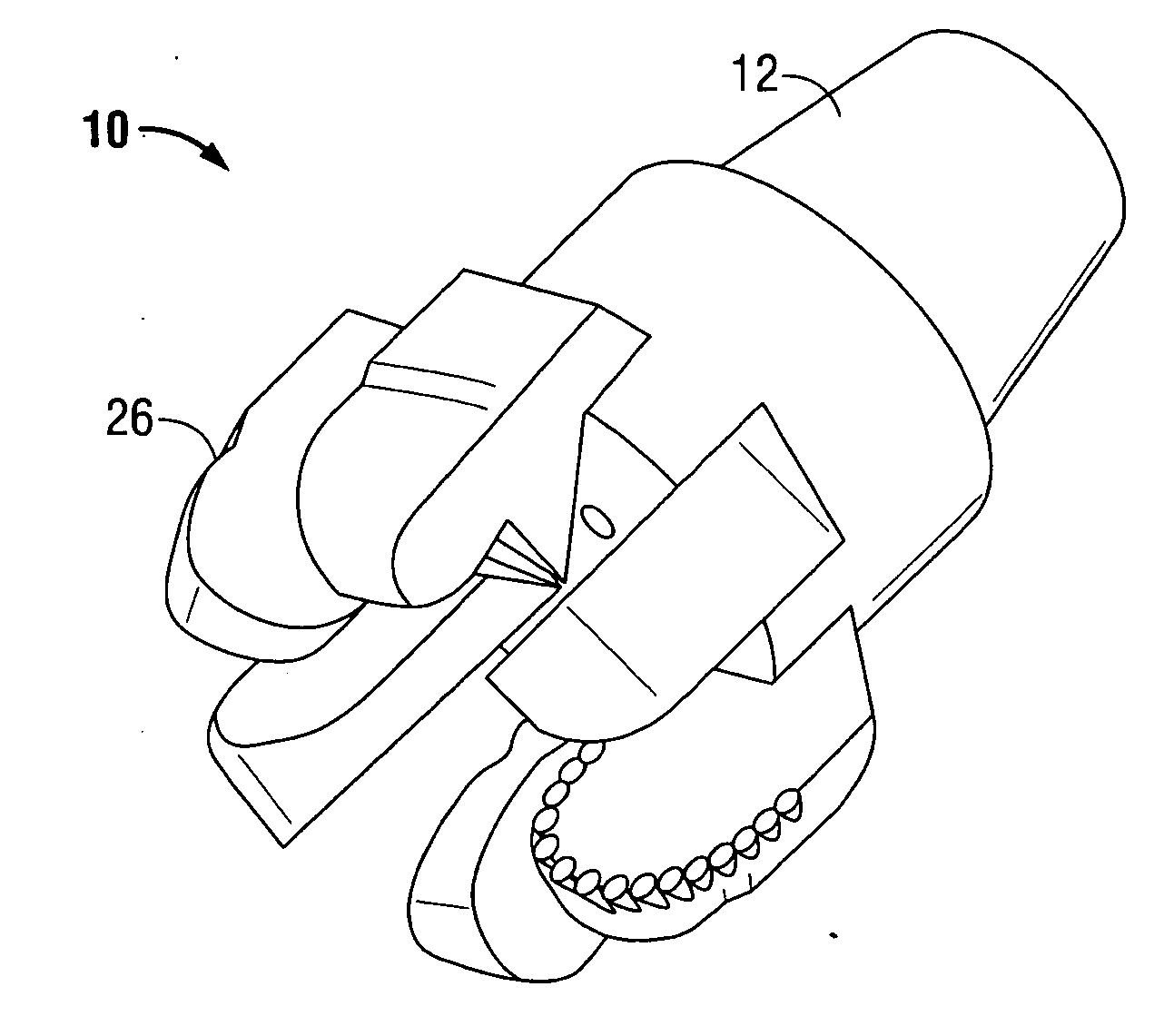Combination coring bit and drill bit using fixed cutter PDC cutters
a technology of fixed cutters and coring bits, which is applied in the direction of underwater structures, artificial islands, construction, etc., can solve the problems of affecting the efficiency and performance of the bit, affecting the progress of well bores, and poor translation of rotation energy to cutting structures, etc., to achieve the effect of reducing energy levels, promoting formation rupture, and weakening end-situ rock strength
- Summary
- Abstract
- Description
- Claims
- Application Information
AI Technical Summary
Benefits of technology
Problems solved by technology
Method used
Image
Examples
Embodiment Construction
[0034]Referring now to the drawings in more detail, FIGS. 1A, 1B, 1C and 1D illustrate a drill bit 10 having a threaded pin end 12 which can be threaded into the box end of a joint of drill pipe (not illustrated). Each of the blades 14, 16, 18, 20, 22 and 24 has its own wear gauge pad 26.
[0035]Each of the blades has a row of PDC cutters 28. It should appreciated that for each of the blades, the row of PDC cutters 28 starts off from the wear pad 26, as best illustrated in FIG. 1D. The rotation of the bit causes the u-shape portion of the row of PDC cutters to drill around what ends up being the core which is uncut until later when the PDC cutters in the relief portion 30 cause the core stump to disintegrate and be drilled out. The PDC cutters in the relief section is identified by the numeral 29. The relief section cutters 29 are also illustrated in FIG. 1C. As will be described hereinafter in greater detail, the core stump is first formed by the action of the PDC cutters 28 and afte...
PUM
 Login to View More
Login to View More Abstract
Description
Claims
Application Information
 Login to View More
Login to View More - R&D
- Intellectual Property
- Life Sciences
- Materials
- Tech Scout
- Unparalleled Data Quality
- Higher Quality Content
- 60% Fewer Hallucinations
Browse by: Latest US Patents, China's latest patents, Technical Efficacy Thesaurus, Application Domain, Technology Topic, Popular Technical Reports.
© 2025 PatSnap. All rights reserved.Legal|Privacy policy|Modern Slavery Act Transparency Statement|Sitemap|About US| Contact US: help@patsnap.com



